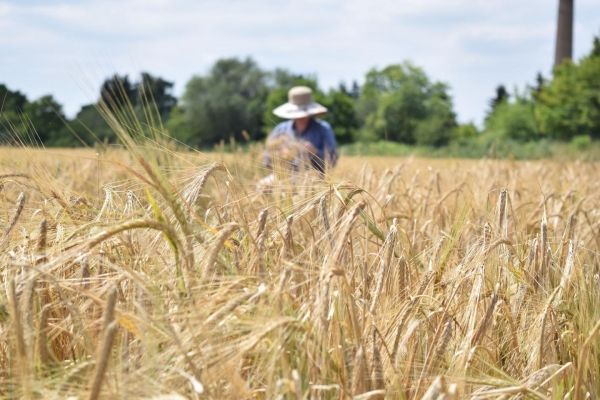Research for the benefit of food security: A new line of barley achieves good crop yields even under poor environmental conditions. It has been bred by a research team from Martin Luther University Halle-Wittenberg (MLU), which crossed a common variety with various types of wild barley. The researchers then planted the new lines of barley in five very different locations around the world, observed the growth of the plants and analysed their genetic make-up. As the team reports in "Scientific Reports", some of the plants were not only more resistant to heat and drought, but in many cases achieve higher yields than local varieties.
Barley, along with wheat and rice, is one of the most important cereals for human nutrition. "The demand for food is increasing worldwide, which is why the cultivation of these cereals must generate reliable crop yields. However, climate change is taking its toll on cultivation conditions worldwide and plants have to be fertilized and irrigated more frequently," says plant scientist Professor Klaus Pillen from MLU. His research team is studying how to improve common cereal varieties for years. Their approach is to cross certain industrially used barley varieties with wild barley. "Wild barley has adapted to adverse environmental conditions over millions of years. It still has a rich biodiversity today," explains Pillen. The idea is to combine the advantageous properties of both cereals.
For the study, the research team crossed a typical barley variety with 25 types of wild barley. This resulted in 48 genetically different plant lines, which the research team planted at five very different locations around the world: Dundee (UK), Halle (Germany), Al Karak (Jordan), Dubai (United Arab Emirates) and Adelaide (Australia). Each of these places has its own environmental conditions: Australia and Dubai suffer from very salty, dry soils, Al Karak and Dubai from heat and drought. In Germany and UK, fields always receive additional nitrogen fertilizer in order to increase crop yields. During the cultivation period, the scientists observed the growth of the plants under environmental stress and compared the results to native varieties from a control group. "We then selected plants from our cultivation that grew particularly well on site and examined their genetic material more closely," continues Pillen. The researchers wanted to draw conclusions about the interaction between genes, the environment and crop yields.
Read more at Martin-Luther-Universität Halle-Wittenberg
Image: Barley harvest in Halle, Germany (Credit: MLU / Nadja Sonntag)


